Best of the best: The top 10 flyhalves in Super Rugby 2021

As the Super Rugby Aotearoa, Super Rugby AU and Super Rugby Trans-Tasman competitions inch closer to kick-off, a panel of RugbyPass writers have taken it upon themselves to rank the best players across New Zealand and Australia in each position.
Some have gone for a statistical approach, while other have trusted their gut, but the end result has yielded a list of the top 10 players per position.
We have already revealed who we believe to be the best fullbacks, wings and midfielders throughout Australasia, but now we turn our focus to the flyhalves.
The writer-by-writer rankings will soon be available on Instagram, but here is the overall rankings that have been calculated as an average of the five scribes’ lists.
1) Richie Mo’unga (Crusaders)
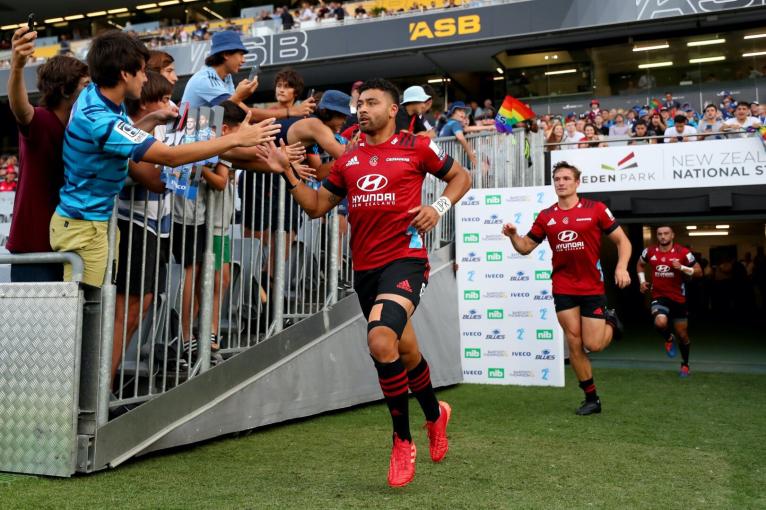
The undisputed premier first-five in all of Super Rugby, Richie Mo’unga dominated the voting among our panel of writers, claiming top spot in each individual rankings.
That should come as no surprise given the way the 26-year-old starred for the Crusaders en route to their Super Rugby Aotearoa crown last year, bagging the competition’s MVP title along the way.
Brilliant on his feet and equipped with a vast range of skills – varying from quality distribution skills, a top-class kicking game and game-breaking vision – Mo’unga is by far the best No. 10 in Super Rugby, and it’s no stretch to say another MVP crown could be in the offing.
2) James O’Connor (Reds)
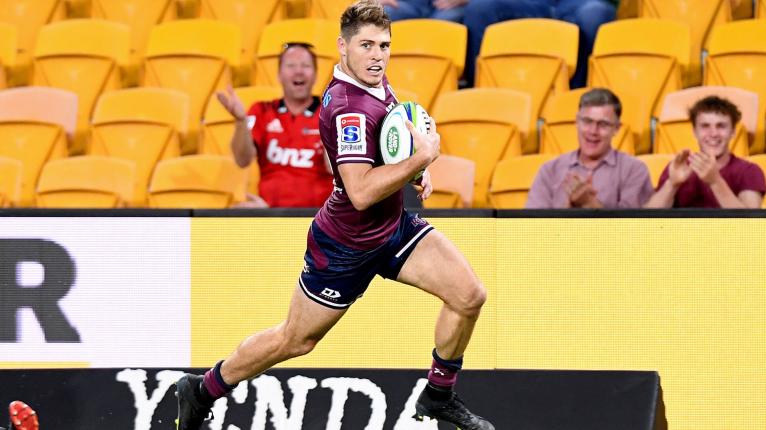
The influence James O’Connor imposed on the Reds after returning to the franchise from a stint in Europe last year was noticeably impactful in both Super Rugby pre-lockdown and in Super Rugby AU.
Thrust into the drivers seat of a young but extremely talented team with an exciting backline to boot, O’Connor provided the leadership and experience the Queensland side needed to make themselves title contenders for the Australian competition.
Initially starting out as a midfielder, a shift into the No. 10 role allowed those outside the 30-year-old to flourish as O’Connor picked apart opposition defences and unleashed the likes of Jordan Petaia, Hunter Paisami and Filipo Daugunu out wide.
Establishing himself as one of Australia’s top playmakers with the Wallabies last year, O’Connor once again stands as an integral member of the Reds camp as the Brisbane-based franchise look to build on their runners-up Super Rugby AU finish last year.
ADVERTISEMENT
View this post on Instagram
3) Josh Ioane (Highlanders)
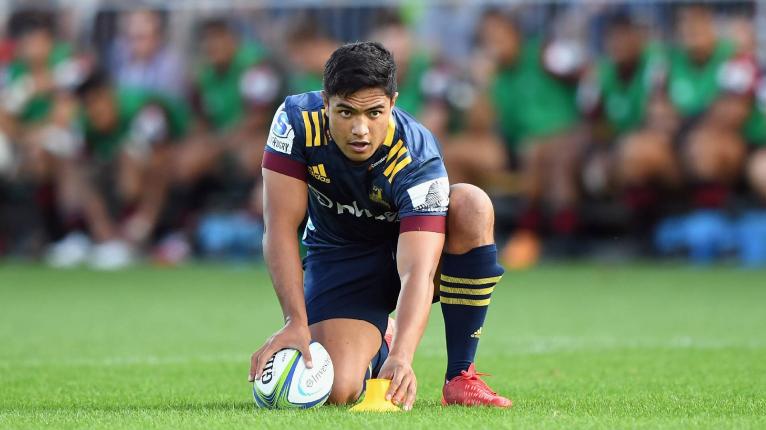
Bursting onto the scene with a breakout campaign in 2019, Josh Ioane has quickly become the obvious successor to Lima Sopoaga at the Highlanders.
Perhaps his greatest attribute is his running game, of which promptly brought him to prominence two years ago as his quick footwork and ability to pierce the defensive line earned him his sole All Blacks cap against Tonga in a World Cup warm-up clash.
Injuries and inconsistency have probably contributed to his inability to add to his test tally, but there is no questioning the talent Ioane has at his disposal, and if he can light up Super Rugby Aotearoa on a regular basis, a national recall wouldn’t be far off.
4) Noah Lolesio (Brumbies)

Emerging as one of the Australia’s brightest young prospects last year, Noah Lolesio looks primed for a long and fruitful career with both the Brumbies and Wallabies.
The 21-year-old was a star in his debut Super Rugby campaign in 2020, leading the Brumbies to a Super Rugby AU title, which is no mean feat given his youth and inexperience at that level while playing in a position that demands calmness, confidence and clarity.
All of those attributes were on show all year for Lolesio, who is again expected to play a similarly influential role for the Brumbies and challenge for a starting spot at the Wallabies in 2021.
5) Otere Black (Blues)
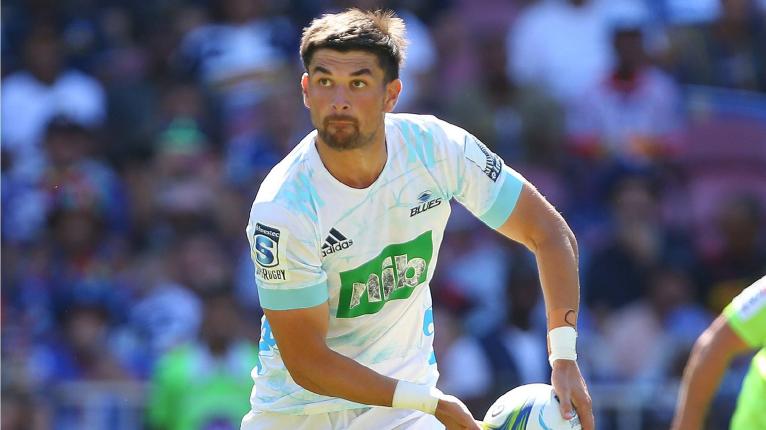
Even the addition of All Blacks playmaking star Beauden Barrett to the Blues wasn’t enough to dislodge Otere Black from the No. 10 jersey for most of Super Rugby Aotearoa last year.
Prior to Barrett’s arrival and deployment at fullback, Black was a key figure for the Auckland franchise before COVID-19 forced the suspension of the original Super Rugby competition, working brilliantly with No. 15 Stephen Perofeta.
Whether he was paired with Barrett or Perofeta in a dual playmaking scheme, Black oozed composure and coolness from the No. 10 jersey, contrasting well with the attacking flair of the aforementioned duo.
With Barrett now on sabbatical in Japan and Perofeta among a number of candidates to fill the void at fullback, it’s fair to say Black is the frontrunner for the first-five role and will be the steady head to whoever offers the excitement from the back.
View this post on Instagram
6) Matt Toomua (Rebels)
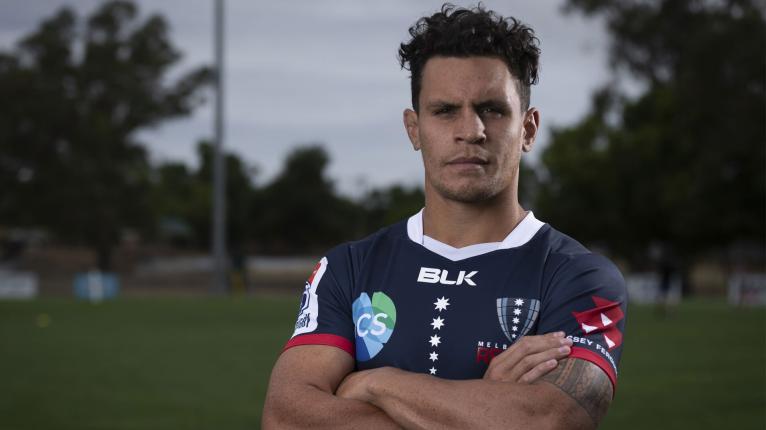
A veteran of the game, Matt Toomua is by far the most experienced player in the Melbourne Rebels set-up, boasting 54 test caps and well over 150 collective appearances across Super Rugby, Gallagher Premiership and Currie Cup level.
That experience and knowledge makes the 31-year-old a vital member of the franchise, as does his versatility (as a first-five and midfielder) and general playmaking ability.
How the Rebels fare this year will largely depend on whether Toomua remains fit and healthy and if he can work well in a halves partnership with new recruit and fellow Wallabies international Joe Powell.
7) Domingo Miotti (Force)
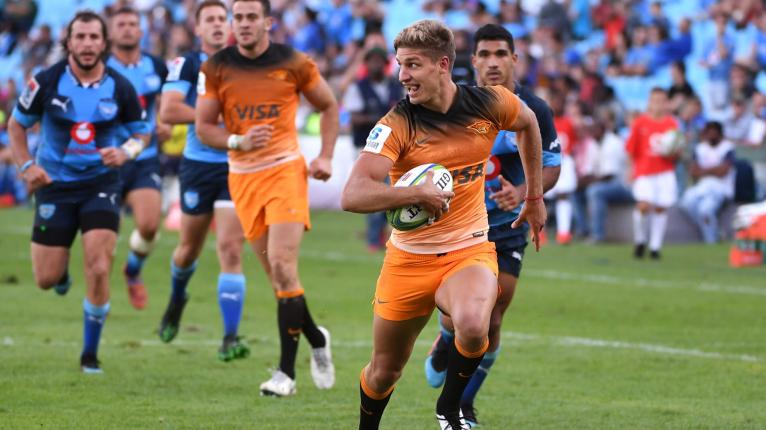
One of many foreign signings made by the Western Force ahead of their second campaign in Super Rugby AU, Los Pumas first-five Domingo Miotti could well be the best pickup of the lot for the Perth-based side.
Joined by three of his compatriots – halfback Tomas Cubelli, flanker Tomas Lezana and prop Santiago Medrano – as well as Irish legend Rob Kearney, All Blacks duo Richard Kahui and Jeremy Thrush, and USA international Marcel Brache, Miotti is part of a strong expat contingent at the Force.
Unlike many of those other players, though, the 24-year-old is still coming into his prime as a footballer and was a standout for the Jaguares last year following the departure of star flyhalf Nicolas Sanchez to Stade Francais.
Opportunities to continue to prove his worth after the COVID-19 lockdown were far and few between for Miotti, but if he’s given the chance to start for the Force, it will be worth taking note of what he can muster up at HBF Park.
8) Will Harrison (Waratahs)
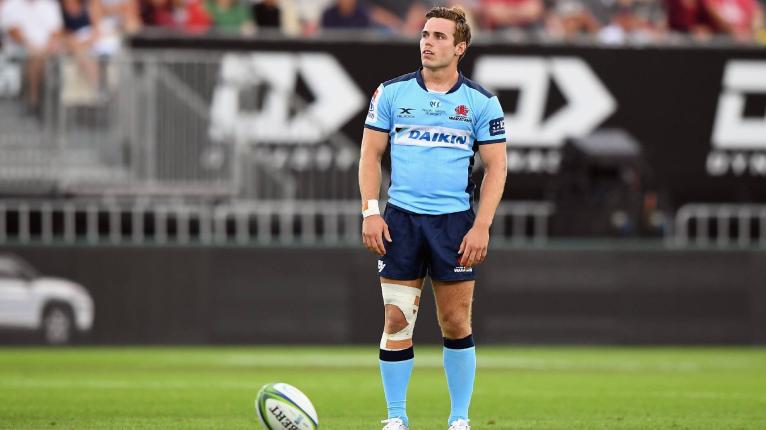
Another promising young Australian pivot coming through the ranks, Will Harrison was a star in a lowly Waratahs outfit last year.
The 21-year-old still has plenty of development and growth left in his game, but his prowess with ball in hand and off the boot were noticeable throughout Super Rugby AU, leading to a Wallabies call-up after just one campaign for the Waratahs.
A test debut proved to be elusive for Harrison, with O’Connor, Lolesio, Toomua and Reece Hodge preferred at No. 10 instead, but the signs are there for a long and prosperous career in Australia.
https://twitter.com/RugbyPass/status/1358586358084767747
9) Mitch Hunt (Highlanders)
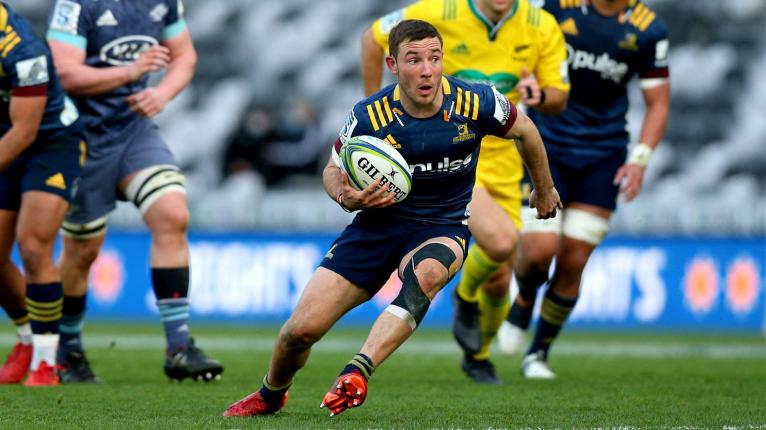
Moving to Dunedin from the Crusaders ahead of the 2020 season in pursuit of more game time, Mitch Hunt was a regular selection for the Highlanders all year.
Beginning his time at Forsyth Barr Stadium at first-five, Hunt pushed Ioane out of position into second five, although that move proved to be a flop, with the Highlanders attaining just one win from six outings before COVID-19 hit.
Upon their return to action in Super Rugby Aotearoa, though, the southerners began to pick up some momentum, especially towards the backend of their campaign, and much of that can be put down to the efforts of Hunt.
Improvements from the Highlanders’ forward pack allowed Hunt to shine in the injury-enforced absence of Ioane, while a shift to fullback following the latter’s return was a masterstroke move that has boosted Hunt’s stocks leading into 2021.
10) Stephen Perofeta (Blues)
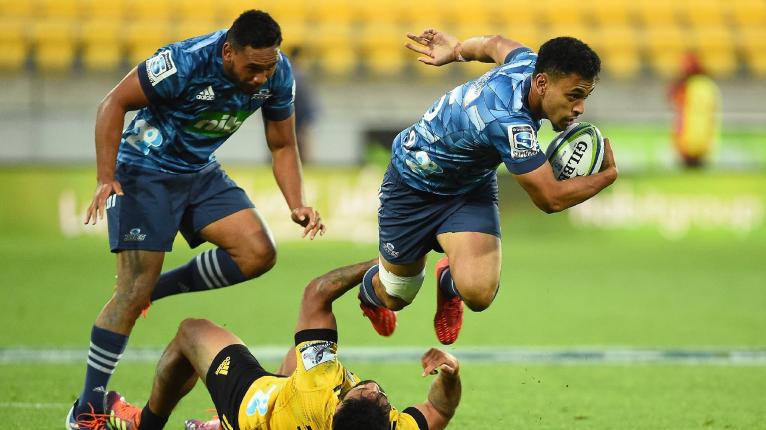
As mentioned earlier, the partnership struck between Black and Perofeta before Barrett was available for the Blues yielded regular success for the Aucklanders.
With Barrett gone for the season, the pairing of Black and Perofeta, which returned four straight wins to propel the Blues to the top four of Super Rugby leading into the COVID-19 lockdown.
Injuries and Barrett’s arrival prevented Perofeta from taking any further part in the Blues’ season, but the 23-year-old has long been touted as a talented prospect, and if the beginning of last year is anything to go by, this may be a coming of age season for him.
Honourable mentions
Six other players were selected by individual writers, but didn’t receive enough votes to make the overall cut.
Headlining the best of the rest was Jackson Garden-Bachop, who will spearhead the backline for the Hurricanes once again this year, while Western Force duo Jono Lance and Jake McIntyre were both tipped to challenge Miotti for a starting spot.
All three Chiefs pivots – Kaleb Trask, Bryn Gatland and Rivez Reihana – were acknowledged to varying degrees, indicating there is no clear cut candidate to don the No. 10 jersey for the Hamilton side.










































Comments on RugbyPass
After their 5/0 start, I had the Crusaders to finish Top 4 only…they lost the plot in Perth but will reload and back themselves vs 4th placed Rebels…
3 Go to commentsBoth nations missed a great opportunity to book a game that would have had a lot of interest from around the world. I understand these games can’t be organised in 5 minutes but they should have found a way to make it happen. I don’t think Wales are ducking anyone but it’s a bad look haha.
3 Go to commentsIt will be fascinating to see the effect that Jo Yapp has. If they can compete with Canada and give BFs a run for their money that will be progress
1 Go to commentsFollowing his dream and putting in the work. Go well young fella!
3 Go to commentsPerhaps filling Twickenham is one of Mitchell’s KPIs. I doubt whether both September matches will be at Twickenham on consecutive weekends. I would take the BF one to a large provincial stadium so as not to give them the advantage and experience of playing at Twickenham before a large crowd prior to the RWC.
2 Go to commentsvery unfortunate for Kitshoff, but big opportunity potentially for Nché to prove he is genuinely the best loosehead in the world, rather than just a specialist finisher. Presuming that if Kitshoff is out, it will also give Steenekamp a chance to come into the 23? Or are others likely to be ahead of him?
1 Go to commentsA long held question in popular culture asks if art imitates life or does the latter influence the former? Over this 6 nations I can ask the same question of the media influencing the thoughts of its audience or vice versa. Nobody wants to see cricket scores in rugby, as a spectacle it is not sustainable. With so many articles about England’s procession and lack of competition it feeds the epicaricacy of many looking for an opportunity to pounce. England are not the first team to dominate nor does it happen only in rugby, think Federer, Nadal, Red Bull or Mercedes, Manchester Utd, Australia in tests and World Cups. Instead of celebrating the achievements why find reasons to falsify it pointing towards larger playing pool, professional for a longer period or mitigate with the lack of growth in other nations. Can we not enjoy it while it is here and know that it won’t last for ever, others coveting what England have will soon take the crown, ask the aforementioned?
6 Go to commentsShame he won’t turn out for the Netherlands now they’re improving. U20s are Euro champs and in the U20 Trophy this year. The senior sides gets better every year too.
3 Go to commentsWill rugbypass tv be showing these games?
1 Go to commentsWell where do you start, the fact that England have a professional domestic league and Ireland’s is fully amatuer, that they have fully seperated professional squads at Fifteens and Sevens (7’s thinly disguised as GB), and Ireland have fully pro Sevens squad who loan some players back to the Semi-Professional Fifteens squad (moved from amateur for only a year or so) for a few games at 6N & RWC’s. The Women’s games is a shambles, and is at risk of killing itself by pushing for professionalism when the market isn’t really there to support it outside one or two countnries..
6 Go to commentsWayne Smith's input didn't have as much impact on the last final as Davison's red card for Thompson. England were 14 points up and flying when that happened.
6 Go to commentsBilly's been playing consistently well for 2 - 3 seasons now and deserves a look in at the top level. Ioane and ALB are still first choice but there needs to be injury cover and succession. His partnership with Jordie gives him first dibs you'd think. Go the Hurricanes.
3 Go to commentsIt’s not up to Wales to support Georgian Rugby. That’s up to International Rugby and Georgia. I sympathise with Georgia’s decent attempt to create this fixture. But for Wales the proposed match up is just a potential stick to beat them with and a potential big psychological blow that young Welsh team doesn’t need. (I’m Irish BTW.)
3 Go to commentsCale certainly looks great in space, but as you say, he has struggled in contact. At 23 years old, turning 24 this year, he should be close to full physical maturity and yet there exists a considerable gap in the power and physicality required for international rugby. Weight doesn’t automatically equate to power and physicality either. Can he go from a player who’s being physically dominated in Super rugby to physically dominating in international rugby in 1 or 2 years? That’s a big ask but he may end up being a late bloomer.
28 Go to commentsIf rugby wants to remain interesting in the AI era then it will need to work on changing the rules. AI will reduce the tactical advantage of smart game plans, will neutralize primary attacking weapons, and will move rugby from a being a game of inches to a game of millimetres. It will be about sheer athleticism and technique,about avoiding mistakes, and about referees. Many fans will find that boring. The answer is to add creative degrees of freedom to the game. The 50-22 is an example. But we can have fun inventing others, like the right to add more players for X minutes per game, or the equivalent of the 2-point conversion in American football, the ability to call a 12-player scrum, etc. Not saying these are great ideas, but making the point that the more of these alternatives you allow, the less AI will be able to lock down high-probability strategies. This is not because AI does not have the compute power, but because it has more choices and has less data, or less-specific data. That will take time and debate, but big, positive and immediate impact could be in the area of ref/TMO assistance. The technology is easily good enough today to detect forward passes, not-straight lineouts, offside at breakdown/scrum/lineout, obstruction, early/late tackles, and a lot of other things. WR should be ultra aggressive in doing this, as it will really help in an area in which the game is really struggling. In the long run there needs to be substantial creativity applied to the rules. Without that AI (along with all of the pro innovations) will turn rugby into a bash fest.
24 Go to commentsSouth Africa rarely play Ireland and France on these tours. Mostly, England, Scotland and Wales. I wonder why
2 Go to commentsIt was a let’s-see-what-you're-made-of type of a game. The Bulls do look good when the opposition allows them to, but Munster shut them down, and they could not find a way through. Jake should be very worried about their chances in the competition.
2 Go to commentsHats off to Fabian for a very impressive journey to date. Is it as ‘uniquely unlikely’ as Rugby Pass suggests, given Anton Segner’s journey at the Blues?
3 Go to commentsSad that this was not confirmed. When administrators talk about expanding the game they evidently don’t include pathways to the top tier of rugby for teams outside of the old boys club. Rugby deserves better, and certainly Georgia does.
3 Go to commentsLions might take him on if they move on Van Rooyen but I doubt he will want to go back, might consider it a step backwards for himself. Sharks would take him on but if Plumtree goes on to win the challenge cup they will keep him on. Also sharks showing some promising signs recently. Stormers and Bulls are stable and Springboks are already filled up. Quality coach though, interesting to see where he ends up
1 Go to comments